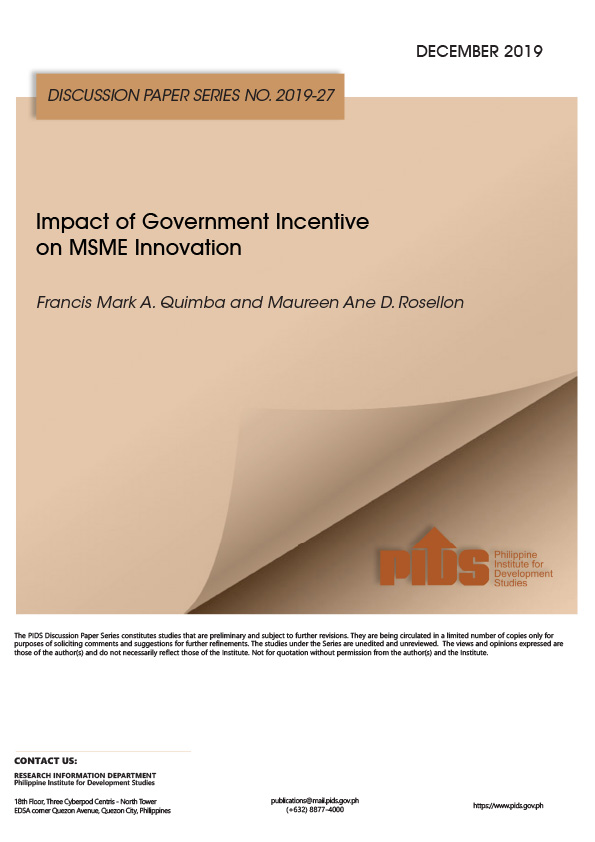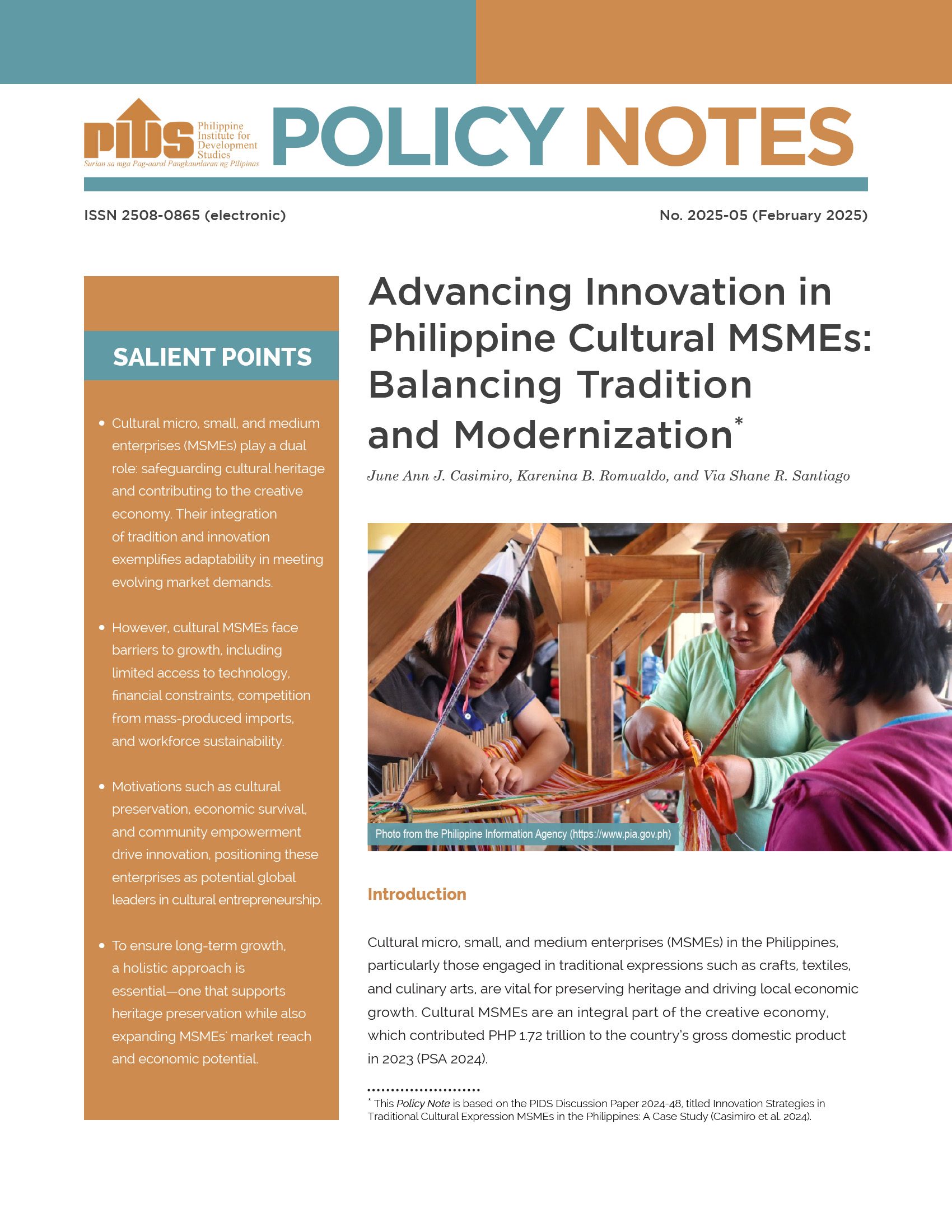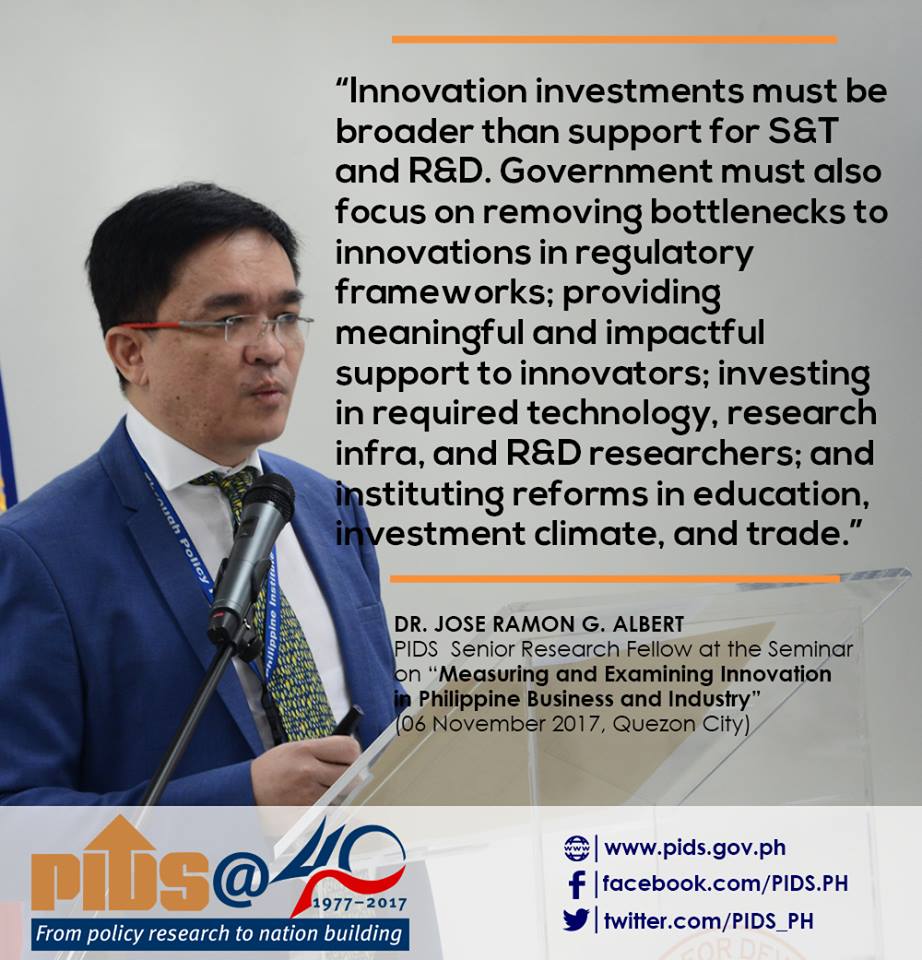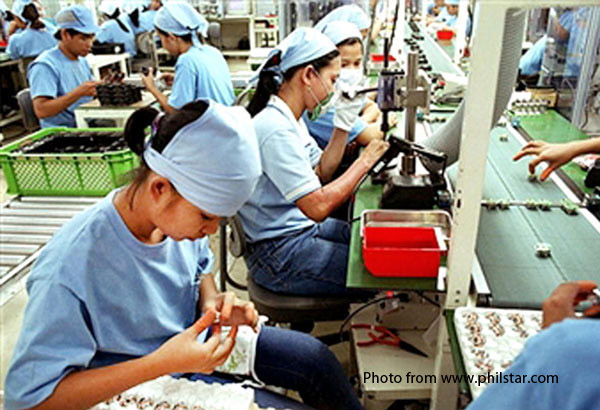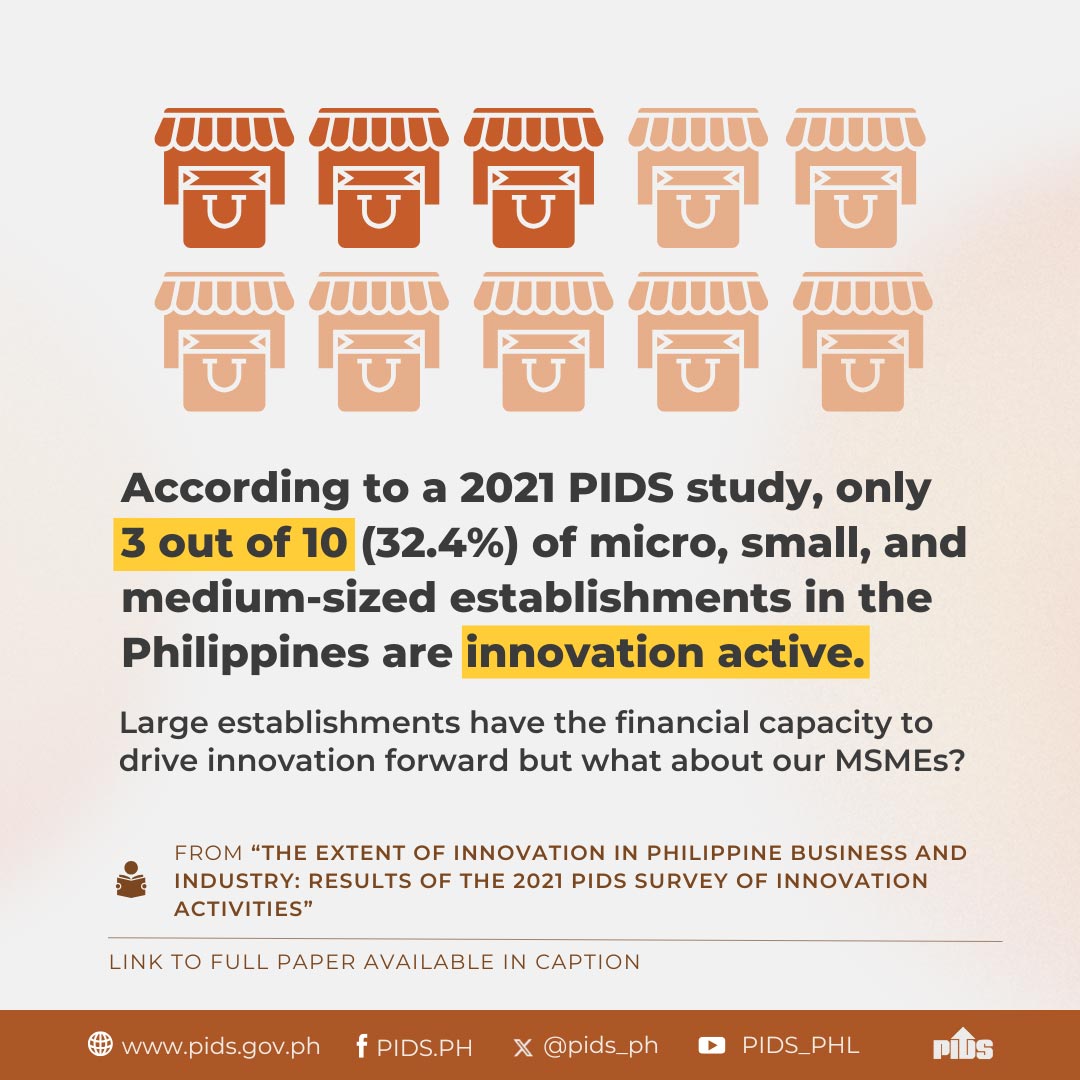
A study of state think tank Philippine Institute for Development Studies (PIDS) found that innovation, whether simple or complex, can help improve a firm’s labor productivity and employment growth.
A simple innovation is when at least one of the four types of innovation—products, services, process, and marketing—is adopted by a firm, while a complex innovation is when two or more of these are combined.
PIDS Senior Research Fellow Connie Bayudan-Dacuycuy and Research Analyst Lora Baje, authors of the study, said the former can be adopted by firms that are constrained by their budgets, while the latter can be adopted by firms that are not confronted with cost issues.
In terms of labor productivity, the study observed that firms adopting simple innovations have higher labor productivity compared with non-innovators. Specifically, results of the study showed that “process innovators have labor productivity that is 110 percent higher,” while product, marketing, and organizational innovators are higher by 103, 93, and 80 percentages, respectively.
The same is true for firms that adopt complex innovations, with product-process innovators having higher labor productivity at 137 percent. The authors noted that “among the possible combinations, only product-process innovations have significant effects on labor productivity.” This means that firms should put more focus on innovating their methods on manufacturing products and services, logistics, delivery, as well as their maintenance systems, purchasing, accounting, and computing operations.
On employment growth, the study observed that “all innovation types have positive and significant effects on employment growth,” but among the four, product and organizational innovations result in higher employment growth by about 28 percent. According to the study, organizational innovation includes “changes in the organizational structure such as creating a new unit or department, dissolving any unit or department, and merging any unit or department”.
For complex innovators, the authors said the combination of organizational-process innovation, specifically logistics services, yield the highest employment growth at 29 percent among other types of process innovations. They also mentioned that the combination of product-organizational-marketing innovations affect employment growth by about 27 percent higher than non-innovators.
While the study showed that “there is no single best innovation strategy” for firms, Bayudan-Dacuycuy and Baje asserted that “complex innovation strategies have higher effects on labor productivity and employment growth than simple innovations.”
The authors, however, emphasized that innovations entail costs and that these are “the most important barriers to innovation especially for micro, small and medium enterprises (MSMEs)”. They also noted that MSMEs, which play an important role in the country’s economic development, face more challenges than large firms due to their limited technical know-how.
To address this, the study urged the government to strengthen innovation programs that support MSMEs by looking at how innovation programs can be integrated into the business strategies and unique needs of MSMEs.
They also recommended for the government to explore policies on the provision of subsidies to innovative enterprises and improve marketing innovations of firms. ###
This press release is based on the PIDS discussion paper titled “Assessing the Effects of Simple and Complex Strategies on the Performance of Firms in the Philippines”.
A simple innovation is when at least one of the four types of innovation—products, services, process, and marketing—is adopted by a firm, while a complex innovation is when two or more of these are combined.
PIDS Senior Research Fellow Connie Bayudan-Dacuycuy and Research Analyst Lora Baje, authors of the study, said the former can be adopted by firms that are constrained by their budgets, while the latter can be adopted by firms that are not confronted with cost issues.
In terms of labor productivity, the study observed that firms adopting simple innovations have higher labor productivity compared with non-innovators. Specifically, results of the study showed that “process innovators have labor productivity that is 110 percent higher,” while product, marketing, and organizational innovators are higher by 103, 93, and 80 percentages, respectively.
The same is true for firms that adopt complex innovations, with product-process innovators having higher labor productivity at 137 percent. The authors noted that “among the possible combinations, only product-process innovations have significant effects on labor productivity.” This means that firms should put more focus on innovating their methods on manufacturing products and services, logistics, delivery, as well as their maintenance systems, purchasing, accounting, and computing operations.
On employment growth, the study observed that “all innovation types have positive and significant effects on employment growth,” but among the four, product and organizational innovations result in higher employment growth by about 28 percent. According to the study, organizational innovation includes “changes in the organizational structure such as creating a new unit or department, dissolving any unit or department, and merging any unit or department”.
For complex innovators, the authors said the combination of organizational-process innovation, specifically logistics services, yield the highest employment growth at 29 percent among other types of process innovations. They also mentioned that the combination of product-organizational-marketing innovations affect employment growth by about 27 percent higher than non-innovators.
While the study showed that “there is no single best innovation strategy” for firms, Bayudan-Dacuycuy and Baje asserted that “complex innovation strategies have higher effects on labor productivity and employment growth than simple innovations.”
The authors, however, emphasized that innovations entail costs and that these are “the most important barriers to innovation especially for micro, small and medium enterprises (MSMEs)”. They also noted that MSMEs, which play an important role in the country’s economic development, face more challenges than large firms due to their limited technical know-how.
To address this, the study urged the government to strengthen innovation programs that support MSMEs by looking at how innovation programs can be integrated into the business strategies and unique needs of MSMEs.
They also recommended for the government to explore policies on the provision of subsidies to innovative enterprises and improve marketing innovations of firms. ###
This press release is based on the PIDS discussion paper titled “Assessing the Effects of Simple and Complex Strategies on the Performance of Firms in the Philippines”.

